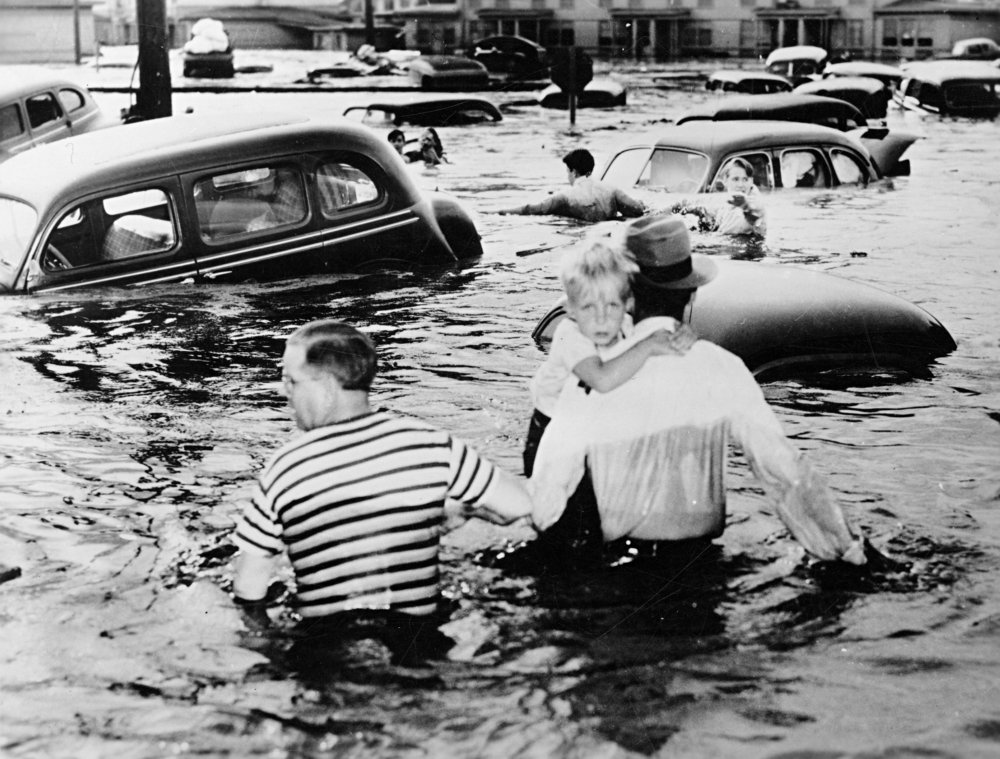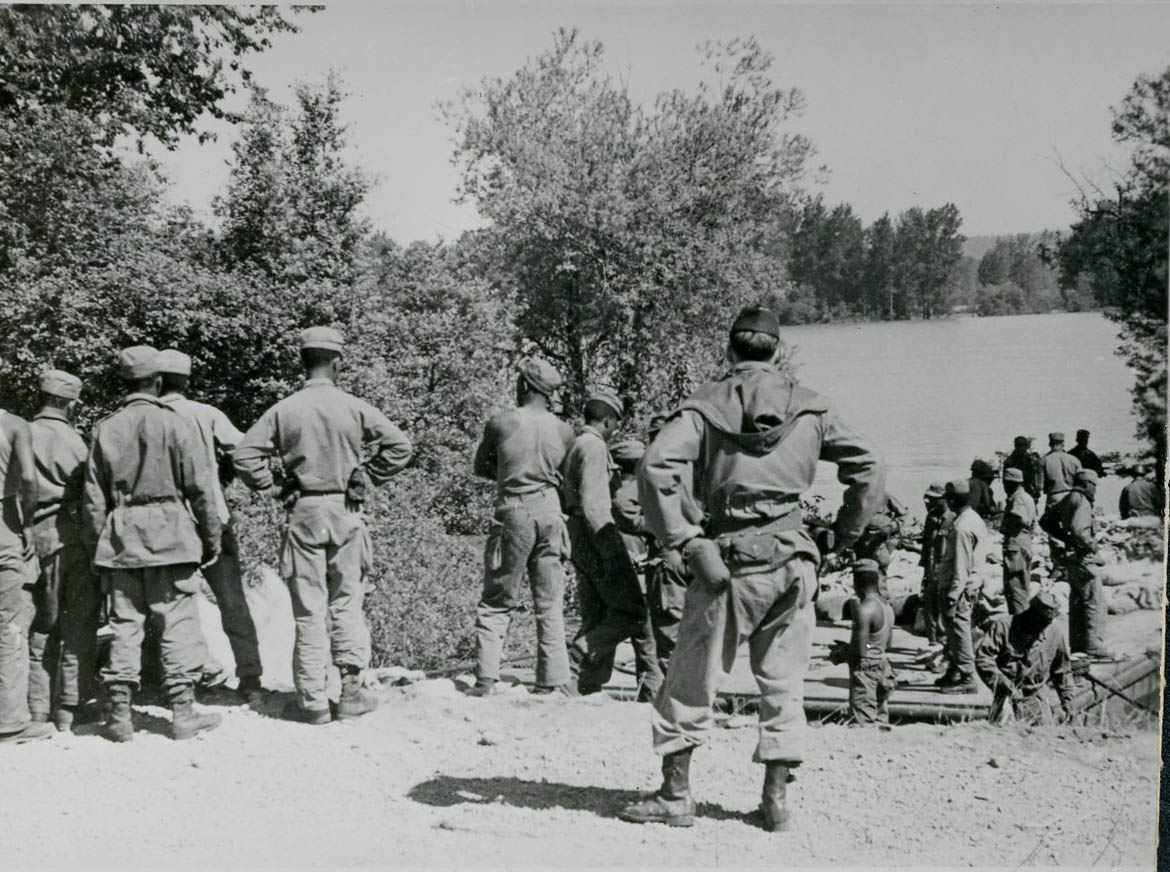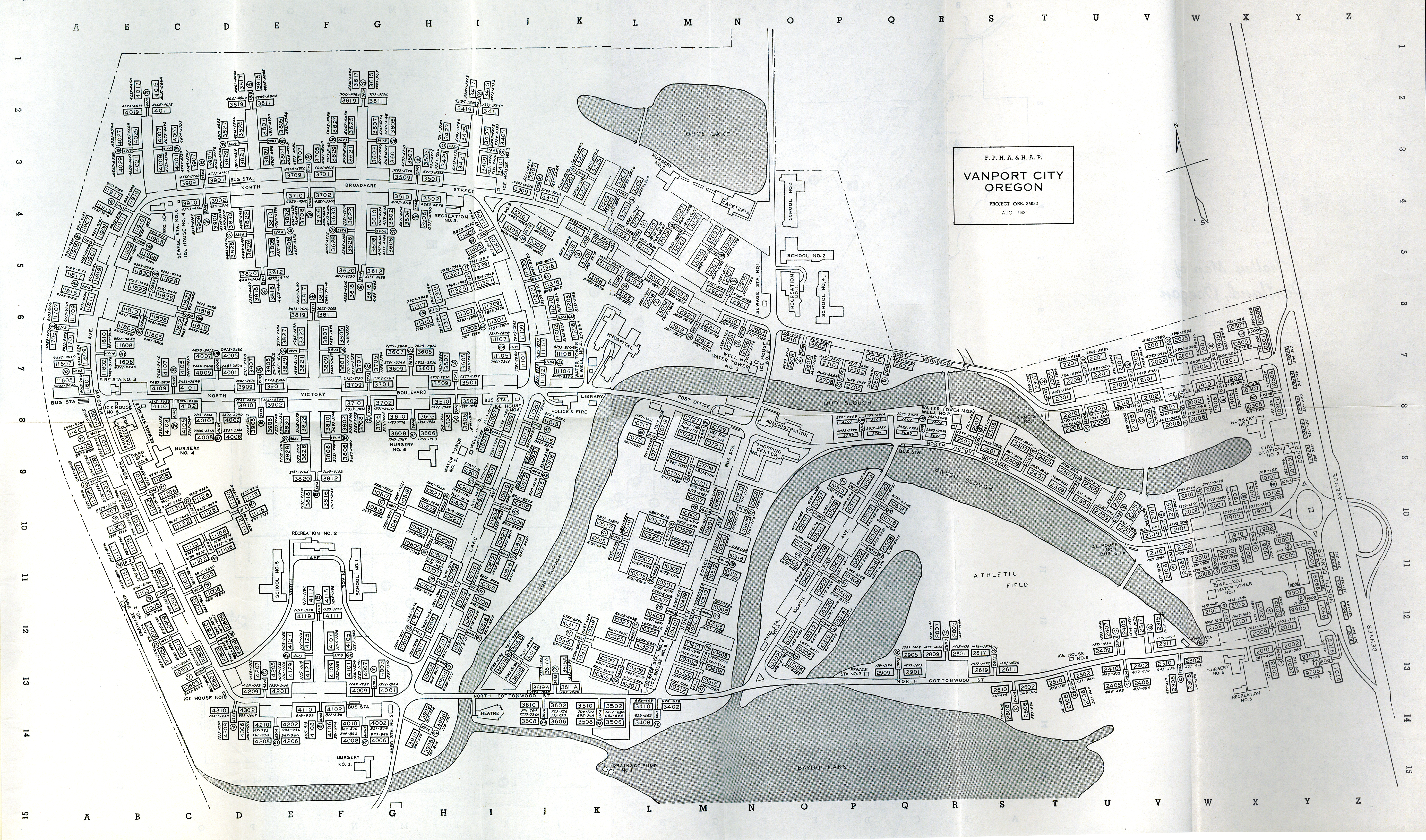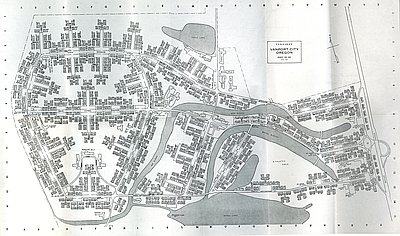Written by Michael N. McGregor
On Memorial Day in 1948, the Columbia River, swirling fiteen feet above normal, punched a hole in a railroad embankment that served as a dike, starting a flood that would leave 18,000 people homeless and alter race relations in Portland forever.
For eight years, the embankment had kept the river out of a newly developed 648-acre complex called Vanport, then the largest public housing project in the United States. Originally meant to be temporary, Vanport was shipbuilding-magnate Henry Kaiser's answer to a lack of local housing in the early days of World War II, when he was recruiting men and women from across the United States to work in his Portland-area shipyards. At the height of the war in 1944, close to 40,000 people lived in Vanport, including 6,000 African Americans, three times as many as had lived in all of Portland two years before.
Kaiser had already erected the first of his shipyards on the Columbia when America entered the war in 1941. As America's involvement in the war escalated and the demand for ships grew, he added two more shipyards, but he could not find enough local workers. He decided to recruit across the nation, offering high wages and free transportation. Before his campaign was a year old, 100,000 workers had flocked to Portland. The problem was there were few places for them to live. This was especially true for black workers, who encountered a city that didn't want them.
When Kaiser began his recruiting, he assumed Portland would build temporary public housing to accommodate his workers, as other cities across the country had when becoming war industries locales. But the local housing authority, in the grip of the real estate industry, balked at having public housing compete with private interests. At the same time, the private housing market was too limited to handle the influx, and real estate practices, written into the real estate industry's Code of Ethics, restricted African Americans to a tiny patch of the city called Albina, an area far too small for the thousands arriving.
Kaiser's response was to purchase a floodplain outside the city's limits (and authority) and, with federal funds and cheap material deemed expendable by the war industry, build what became the second-largest city in Oregon. During its short life, Vanport would be called everything from a "Miracle City" to a "Masterpiece of Urban Planning" to the "Northwest's unique sociological experiment" to the "Negro project." One of its most important legacies, however, may be its role in preparing mostly-white Oregon for the multicultural post-war era.
Life in Vanport was never easy. With 40,000 people pressed together in thin-walled buildings, some working days and others at night, noise was constant. Because both mothers and fathers worked, childcare was an issue. And thanks to the Northwest weather and the project's location, mud was everywhere. For many, though, the biggest adjustment was living beside people different from themselves.
Portland had long had a reputation as what one national black leader called "the most prejudiced (city) in the west," a place where African Americans were limited to work on the railroads or as domestics in homes and hotels. As a result, only 2,000 blacks lived in the city just before the war. In the rest of Oregon, the population was very small. This was due in part to Oregon's first constitution, which prohibited blacks from even entering the state, and to the activities of the Ku Klux Klan, which in the 1920s had up to 35,000 Oregon members at its height and recruited over 50,000 Oregonians on to their rolls by 1930.
Given this history of overt racism, Vanport was a risky experiment, allowing large numbers of whites and blacks to live and work together for the first time. Many local leaders railed against it, predicting dire results. In practice, though, the experiment worked. Discrimination did not end — blacks were unofficially segregated into the least desirable units and unjustly blamed for creating a climate of crime — but for the most part the residents lived in peace. The Vanport schools were integrated, as were recreational facilities and churches, and African Americans were able to form several groups that helped them protect and expand their rights.
When the war was over and the shipyard jobs ended, despite calls by civic leaders for them to leave, many blacks stayed in Vanport, making Oregon their home. When the Columbia River flood came in 1948, destroying the complex, 25% of those left homeless were African American. This created a dilemma: with so many of the people the city had always termed "undesirable" in need, how would Portland respond?
The city's response was not a clear victory for integration and human rights, but it gave hints that positive change was possible. Many whites ignored those left homeless, hoping they would leave the state or expecting the small Albina community to care for them. Many, however, welcomed the displaced residents into their homes, giving them temporary shelter and, in the process, coming to know members of a minority community, perhaps for the first time. The black community rallied around the flood victims and began an organized campaign to convince Portland's political, economic, and cultural insitutions to address racism in housing and employment.
Discrimination in Portland was deeply entrenched. In the 1950s the real estate industry revised its Code of Ethics, but in 1960, when over 10,000 African Americans lived in the city, 73 percent of them were still confined to Albina because of discriminatory housing practices. Because of this concentration, Portland's schools were as segregated as Alabama's.
It would take court rulings, changes in federal laws, and shifts in social attitudes that came with the national Civil Rights Movement to make Oregon a more hospitable place for non-whites, but the Vanport flood, by confronting people with a clear choice between callousness and compassion, forced the issue and allowed a trickle of change to flow.
© Michael McGregor, 2003
Michael McGregor is Professor of Non-fiction writing and English at Portland State University





